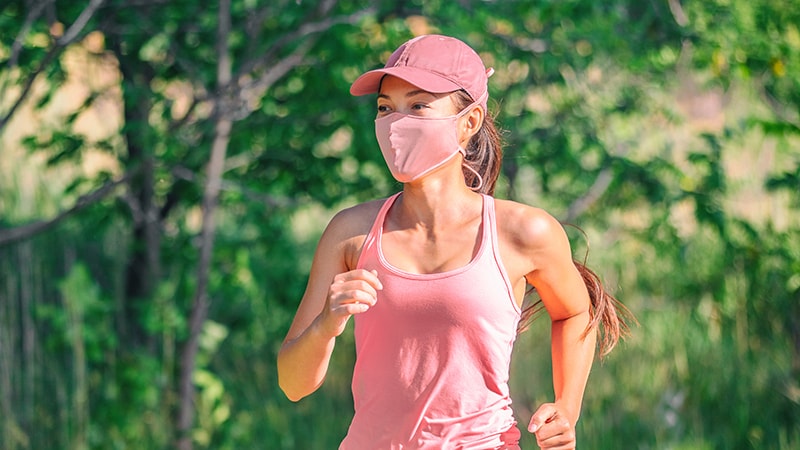[ad_1]
The study covered in this summary was published on medRxiv.org as a prepublication and has not yet been peer reviewed.
Key points to remember
-
Wearing a cloth face mask did not cause significant respiratory or cardiovascular changes during exercise, including heart rate, blood pressure, lactate, or oxygen saturation, regardless of the intensity of the exercise. ‘exercise.
-
Wearing a cloth face mask during exercise increased breathing difficulty and, at higher intensities, affected respiratory variables such as inspiratory capacity and respiratory rate.
-
There were no differences between men and women.
Why it matters
-
Masks are one of the most effective non-pharmacological strategies for preventing the spread of COVID-19 and are recommended even during exercise, especially in indoor gyms.
-
This data may influence exercise recommendations for health guidelines during the COVID-19 pandemic and “debunk unfounded claims of harmful effects from masks during exercise,” the researchers conclude.
Study design
-
This was a crossover study performed in an intra-hospital exercise physiology laboratory in São Paulo, Brazil, between April and November 2021.
-
Thirty-five individuals (17 men and 18 women) were analyzed; 31 participants were classified as active and four as inactive.
-
Participants were studied using a traveling square wave test on a motorized treadmill at four different intensities wearing a three-layer fabric mask or without a mask, while several physiological, metabolic and perceptual measurements were taken. .
Key results
-
Wearing the mask had no influence on final expiratory lung volume (EELV) and EELV / forced vital capacity ratio, heart rate, lactate, blood pressure, or oxygen saturation, regardless of gender.
-
Wearing of mask reduced inspiratory capacity, respiratory rate at peak but not at start, tidal volume except at start, ventilatory equivalent for carbon dioxide, exhaustion time, forced vital capacity at rest, forced expiratory volume in 1 second at rest and peak expiratory flow at rest, regardless of gender.
-
Mask bearing an increased Tobin’s index (or shallow breathing index) at its peak in women only, end-of-expiration carbon dioxide pressure except initially for both sexes, and subjective sensations of warmth, maladjustment, discomfort, fatigue, resistance, salinity and humidity, regardless of gender.
Limits
-
Participants were required to wear a face mask for breath-to-breath measurements over the cloth face mask, which may have increased discomfort and led to inaccuracies in the measurements due to escaping air.
-
Current data may not apply to trained individuals.
-
Since sufficient levels of physical activity prevent morbidity and mortality and improve vaccine immunogenicity, it is important that mask mandates do not lead to reduced physical activity.
-
It remains to be seen whether negative feelings associated with mask use can lead to decreased exercise adherence.
-
The influence of mask wearing during exercise in clinical populations merits investigation.
Disclosures
-
The authors did not receive any specific funding for this work.
-
Bruno Gualano, Gabriel Barreto, Tamires Nunes Oliveira and Bryan Saunders were financially supported by the Fundação de Amparo in Pesquisa do Estado de São Paulo.
-
Bryan Saunders also received a scholarship from the Faculdade de Medicina da Universidade de São Paulo.
This is a summary of a preprinted research study, “A cloth face mask causes no major respiratory or cardiovascular disturbance during moderate to intense exercise,” by Bryan Saunders, Bruno Gualano and their colleagues at the Faculty of Medicine at The University of Sao Paulo on MedRxiv is brought to you by Medscape. This study has not yet been peer reviewed. The full text of the study is available at medRxiv.org.
[ad_2]

